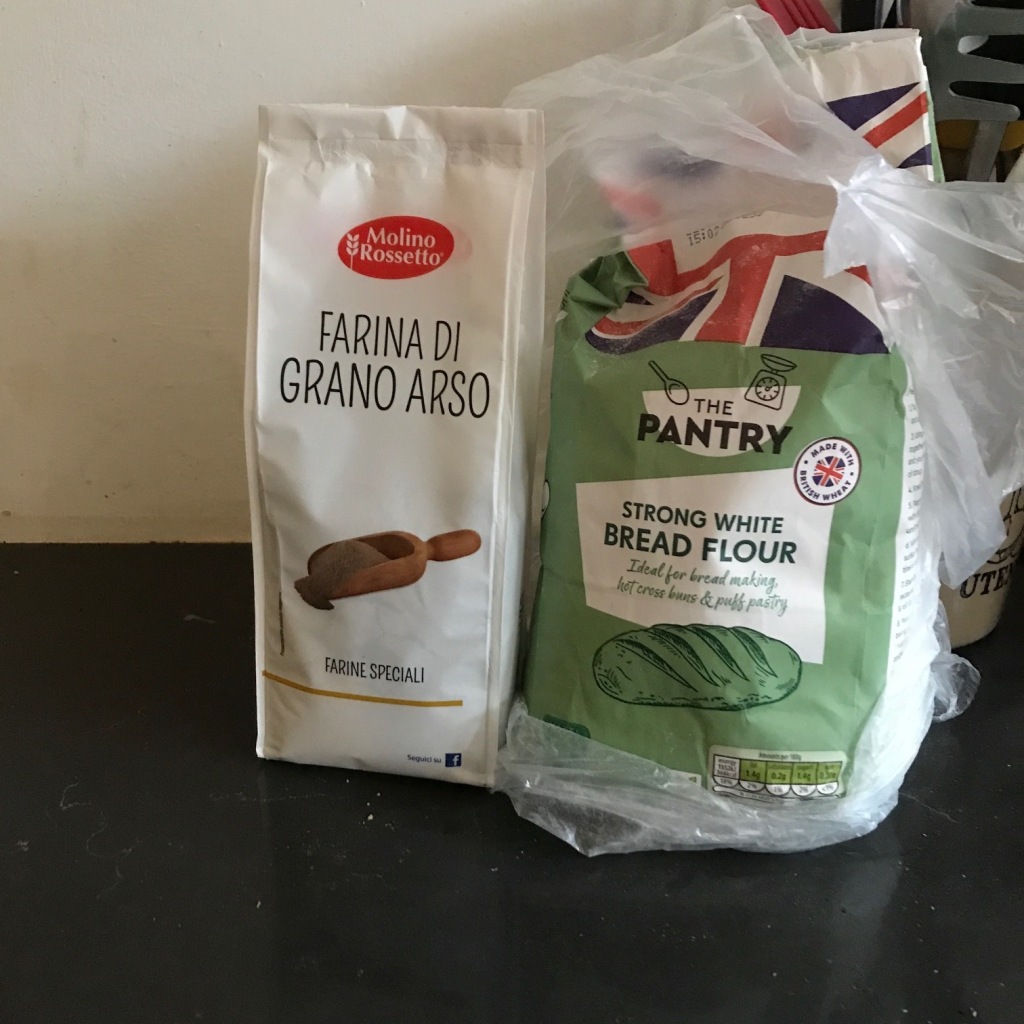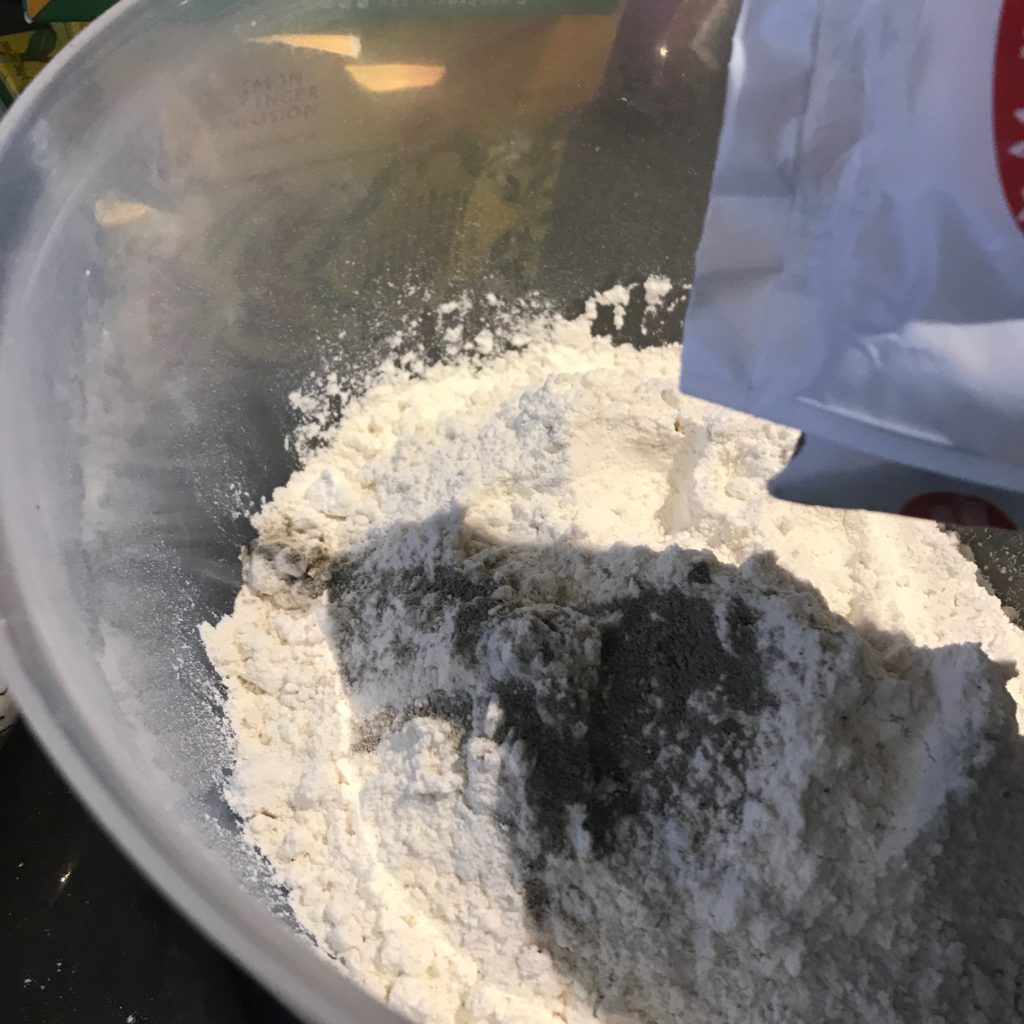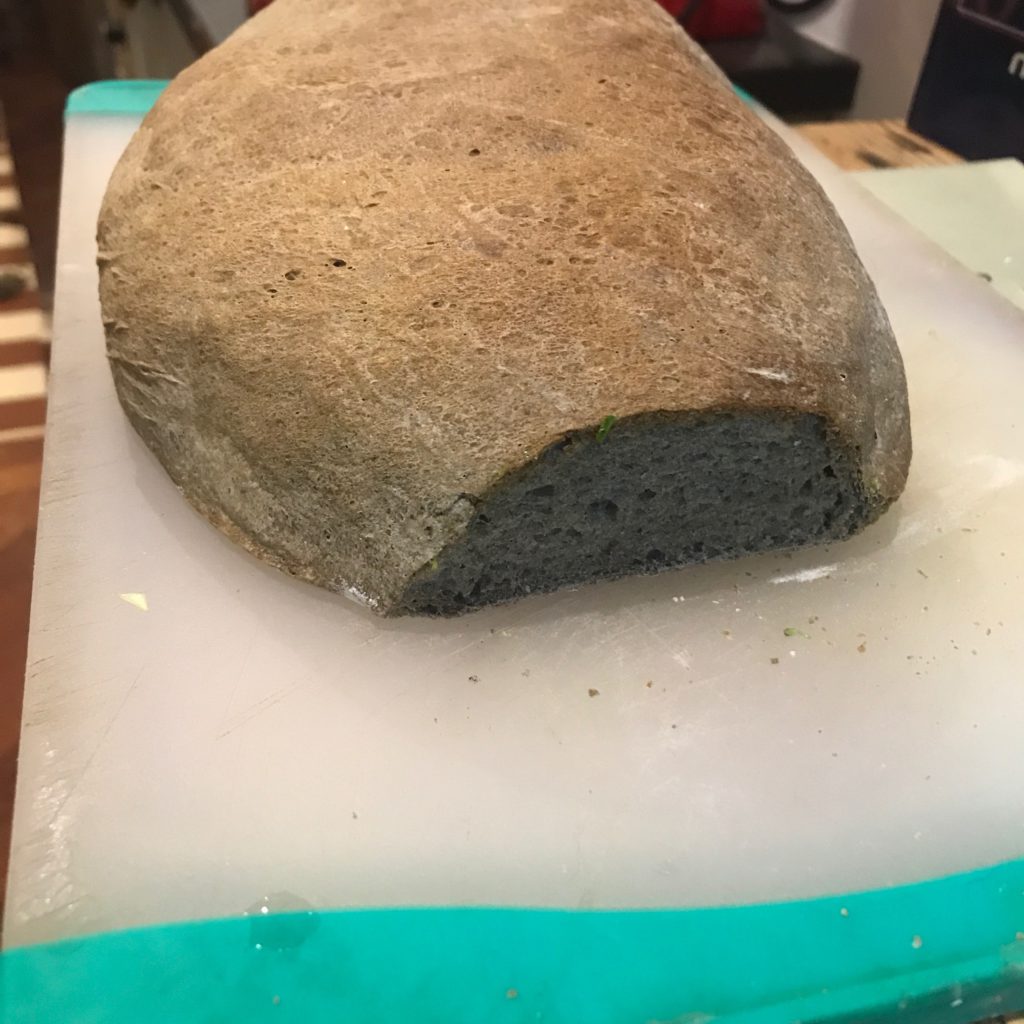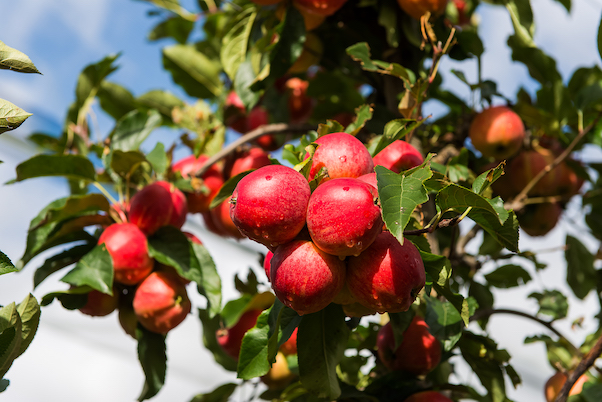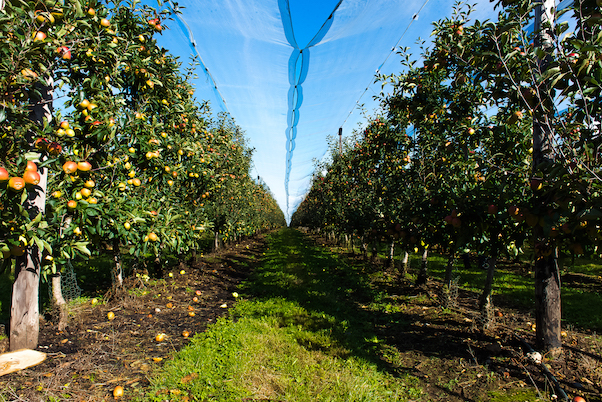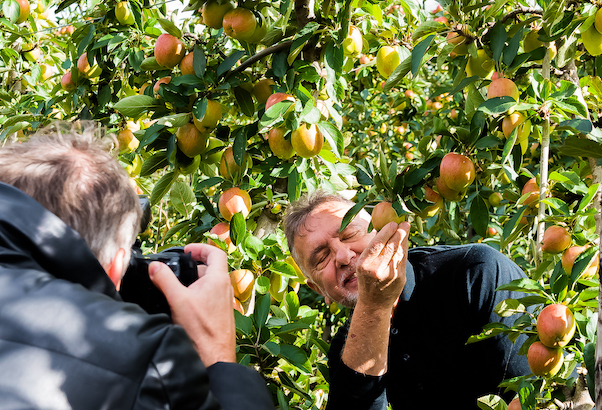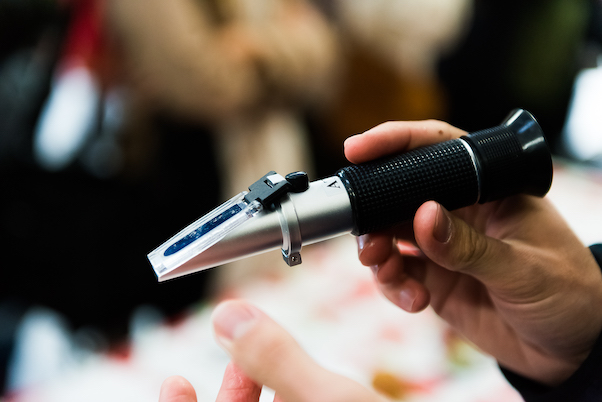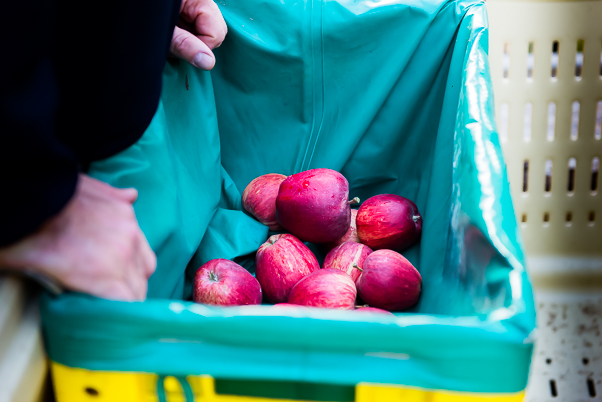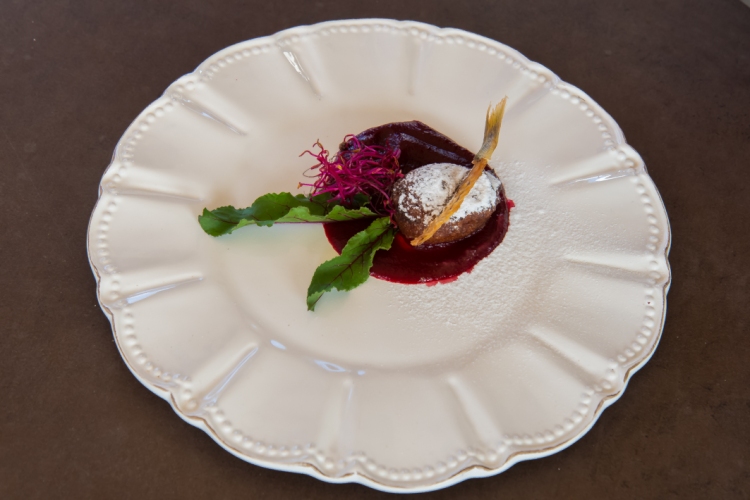Forget fika, there’s more to Swedish gastronomy than coffee and buns. Nick takes the plane north to dig down into the food-rich region of Jämtland Härjedalen

The Sound Of Silence
It takes two airplanes to get to Östersund, the capital and only city in Jämtland Härjedalen. The final descent out of a clear blue sky reveals a countryside that seems more lakes than land, with the lakes still frozen in April and blanketed in thick snow.
The melt is beginning though and soon the locals will put away their skis, the area is famous for its skiing, and begin to cycle and hike through their forests and fields. The Swedish here love to be outdoors whatever the weather.
And they love to eat well, the region is dotted with over 200 artisan food and drink producers, as well as restaurants and chefs that take inspiration and ingredients from the land and water around them. Self-sufficiency is real here, not a fashion.

The Frozen North
Östersund on the edge of Lake Storsjön is a lively, friendly place and geographically it’s celebrated as the very centre of Sweden. The bars and restaurants don’t compete for business, they share it and as I move around the town I find the same faces – bartenders, chefs, shop owners and local food entrepreneurs lall waving cheerfully as they slip and slide on the snow.
All that Jazz

Drink it or wear it?
In the centre of this centre of Sweden is Jazzköket, which means ‘Jazz Cuisine’ in English. Tucked away in a hidden courtyard, its open kitchen radiates heat and bonhomie and, typically for Sweden, there are all ages enjoying its eclectic interior design and delicious food.
From the bakery in the cellar comes out superb sourdough and chefs cook with beef from mountain cows, as well as ‘Fangsten’, which means whatever seafood has been caught and brought to them that day.

A Swedish Hipster?
Across the courtyard is a cellar bar, where the team create esoteric cocktails based on local ingredients and invite guests to choose their own music from a stash of vinyl in the corner.
Having a browse, I find the oeuvre of Saxon features strongly, Swedish men may all look like Hoxton hipsters but they do like ‘the metal’ all the same.
The hip bartender makes up a selection of cocktails for me to try, including a marvellous one made with moss and a food dish whose name is tongue twister, but with its salty fish roe totally blows me away with its depths of flavours and sheer Swedishness.

It doesn’t get much more Swedish
Although for a classic Swedish lunch you’d be hard pressed to find better than the salmon, potato, carrot and dill I happily eat at Lilla Saluhallen later, a delicatessen and casual restaurant combined and run by the partner of the man who runs the Jazzkoket bar.

It was all Greek to me
In her well-stocked shop of local produce, I taste some superb cheeses that came from Oviken Ost,a nearby dairy that makes its artisan cheeses from cows and sheep with the milk either from their own herd or sourced locally.
So, good was the cheese that I have to meet the makers, so I drive up to the dairy in blazing sunshine and blue skies that belie the 5C temperature outside.

Say Cheese
‘We couldn’t get the sheep’s milk we wanted at first,’ I’m told as I am shown around, ‘so we began crossing Nordic ewes with purebred East Friesian dairy rams’. They have over 90 acres and 200 hectares of managed forest around them and the whole dairy here is eco-friendly with heat coming from a wood chip boiler that uses wood from their forest. The cheese they make is so good it’s served at Magnus Faviken’s restaurant not far away, as well as at Noma.

Delicious on crispbread
The milk is left unpasteurised to get every bit of the flavour out and the cheeses, which range from hard to soft, are a real treat. This is how cheese ought to taste all the time.
Pork matters
‘They look like Rastafarian pigs,’ laughs the chef at Slaktarn i Östersund AB, ‘they have long furry coats’. I’m looking down at perhaps the finest pork chop I have ever seen on a plate.
As thick as an old phone book, it’s perfectly cooked and simply served with crisp apple shards and local artisan beers Jämtlands Steamer and Jämtlands India Pale Ale. Here with the latter they know better than to overhop and create refreshing brews that are balanced and very drinkable.

Chop chop
The guys at Slaktarn i Östersund AB are young men driven by a desire for proper meat. The animals come from local farmers who all focus on providing natural lives for their animals, all grown to proper maturity and fed naturally from what the animals themselves choose to eat as they wander about freely.
The soil is monitored for organic quality and slaughter is carried out to the most humane methods, with the meat then aged slowly and carefully. The result is meat selected by all the best shops and restaurants in the area. And yes, that includes that place Faviken again.
Ice age

The smallest fishing rod ever
Of course, if you really want to get fresh food, you need to catch it yourself. Which is why the next day I find myself lying face down in the snow peering into a metre-deep hole we’ve just drilled through the lake ice.

Just a few more feet to go
A thirty minutes ride as passenger, and for a glorious fifteen minutes as a driver, on a powerful snowmobile with local hotel owner and mountain rescue expert Richard, has brought me out to the middle of a giant lake where the guides brew our coffee on fires made from scavenged wood and proffer slices of cured reindeer to keep us fed until the fish bite.

Not dead, just fishing
The rod is tiny, I look like a garden gnome. I can see the fish when I peer down, but they don’t want to be caught. We pack up and motor to a restaurant a few kilometres away deep in the Sami, the indigenous peoples, land.
The restaurant Hävvi in Glen is part of the Tossåsens Sami village in the Oviken mountains 50 km from Östersund and chef Elaine is married into a Sami family. The Sami people have lived from, and with, nature since time began and sustainability is their natural way of life.
A large bearskin pinned to the ceiling suggests that their attitude to nature is also pragmatic.
We eat Sami appetisers, a platter of smoked and cured reindeer components – heart, tongue, liver, that sort of thing – and then smoked mountain char, sea buckthorn, fried angelica, mayonnaise with apple vinegar, roasted bone marrow, fried fish skin and cloudberries, a plate redolent of this part of Sweden.

Plating up the Elk’s nose
Then it’s tempered suovas with slow baked swede, spring vegetables, blueberries and creamed black chanterelle mushrooms and crispy elknose. Suovas is dry-salted meat smoked by the Sami over an open fire.
Crispy elknose is like pork scratchings, but a great deal tastier and we end with a palate cleansing sorbet made from cloudberries and sea buckthorn. It’s a meal that anywhere else would be served surrounded by pomposity, pretentiousness and with chef posing at the pass. Here Elaine just cooks the food she likes to eat, and it is excellent.
Drinking songs

Snaps
The sound of singing is loud in the basement of the Buustamon hotel and we’ve only had a few drinks. Helan Går, roughly Chug It Down, is one song being belted out and I wish I could join in.
Snapsvisor (drinking songs) are popular with all ages and classes in Sweden and where better to get the tonsils twitching then in a distillery?
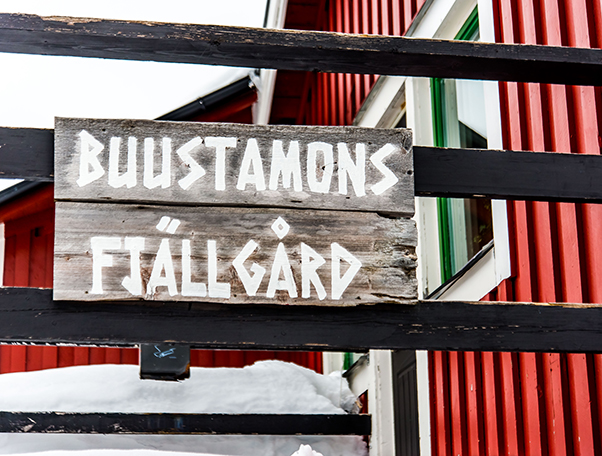
Where the Spirits live
Snaps is a shot of aquavit, an ingrained part of Swedish culture and in this charming hotel and farm, halfway up Areskutan and accessible only by a bumpy but fun ride in a snowcat, they make their own – all the way from the mash to the bottle labels. Beautiful freshwater, lingonberries, elderflower and all kinds of local herbs and spices are used between spring and autumn, any other time the water is frozen solid, to make their range of snaps – Arevodka, Buustasup, and Hojt.
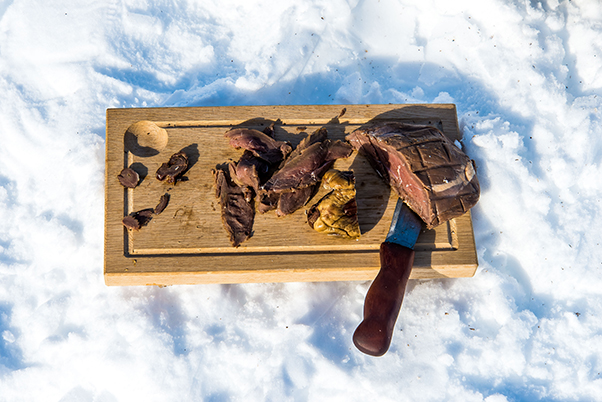
Snow snacks
It took them a long time to get the distilling permit under Sweden’s somewhat draconian alcohol laws, and rather bizarrely you still can’t actually buy a bottle at the hotel. No matter, I wobble up the stairs to the restaurant to a superb dinner of local produce in the wood heavy dining room.
Jämtland Härjedalen has certainly left me singing inside my head, with its wonderful people, food, drink and of course fabulous scenery. This amazing region is a place I could very happily call home and I can’t wait to come back again.

The foraging chef
Big takt (thanks) to:
The Jämtland Härjedalen Tourist Board
Visit Sweden
www.Jht.se
www.Adventuresweden.com
Buustamon Hotel
Copperhill Mountain Lodge
www.are.se
Wikners i Persåsen Hotel
